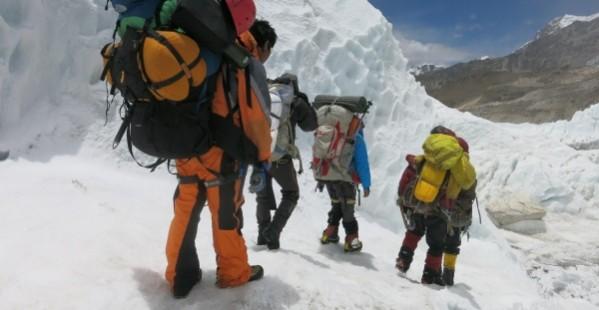
Melting glaciers on the highest peak of Earth, Mount Everest, are exposing more and more bodies of dead climbers, due to rise in temperatures caused by global warming. This has reportedly sparked serious concerns among the organisers of expeditions to the world-famous peak.
More than 200 mountaineers have died on the peak since 1922 when the first climbers' deaths on the Everest were recorded. Most bodies have remained buried under glaciers or snow, CNN has reported. Around 4,800 climbers are believed to have scaled the Mount Everest.
With the onset of the spring climbing season, bodies, which are being exposed by the melting glaciers are being removed on the Chinese side of the peak. The climbers are killed either by avalanches or due to rockfall. A few also die by injuries sustained from a fall, from exposure to the elements, from exhaustion or from altitude illness.
What happens to dead bodies?
The corpse of a dead person is mummified by the strong wind and low temperatures and quickly gets frozen into place. Rescuers immediately step in to hack the body out of the ice. The frozen body may also have doubled in weight due to the snow or ice. Thus, recovering a body becomes extremely difficult. It can take a team of eight people to handle just one body. The recovery of a body is also very dangerous. In many cases, helpers died recovering the dead.

"Due to climate change and global warming, snow and glaciers are melting fast, and bodies are being exposed and discovered by climbers," said Ang Tshering Sherpa, former President of the Nepal Mountaineering Association.
"Since 2008, my firm has brought down seven bodies, some dating back to a British expedition in the 1970s," he said.
According to multiple studies, global warming is unlocking the deadly mountain's gruesome secrets as glaciers in the Everest region are melting and thinning.
"It's a serious issue. We are concerned about this as it's getting worse," said Sobit Kunwar, an official of the Nepal National Mountain Guides Association.
"We are trying to spread information to have a coordinated way to deal with it," he said. The association's Treasurer, Tenzeeng Sherpa, said climate change was affecting Nepal with glaciers, in parts, melting by a meter every year. "We bring down most bodies. But for those that could not be brought down we pay our respects by saying prayers and covering them with rocks or snow," Sherpa said.
Though recovering and removing bodies from the higher camps is both expensive and difficult, the government is least bothered to take any responsibility of the dead bodies.
















